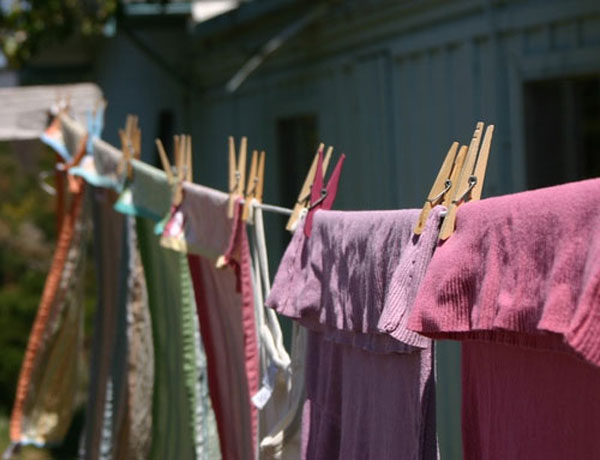 The folks who design for our future are looking to us for clues to helping people go greener. How about using humor? I recently wrote about how designers are incorporating people's behavior in their "design thinking." This 'power to the people' premise only goes so far (although, it is virtuous to always consider the consumers needs). The next common sense step to sustainable design is to implement a shift in people's behavior towards, let's say - garbage and recycling. My family was recently reminiscing about a trip we took to Spain to visit relatives. I asked one of my kids...CLICK HERE FOR MORE
The folks who design for our future are looking to us for clues to helping people go greener. How about using humor? I recently wrote about how designers are incorporating people's behavior in their "design thinking." This 'power to the people' premise only goes so far (although, it is virtuous to always consider the consumers needs). The next common sense step to sustainable design is to implement a shift in people's behavior towards, let's say - garbage and recycling. My family was recently reminiscing about a trip we took to Spain to visit relatives. I asked one of my kids...CLICK HERE FOR MORE
A Tipsy Idea: DIY Lamp from Wine Bottles
 You've had a lot of fun emptying those wine bottles and now they are just ripe for an upcycled illuminating reuse. No doubt you've seen candlesticks made from wine bottles with overflowing candle drippings. That's one simple retro way to repurpose those wine bottles. Here's a more fashionable DIY lighting solution...CLICK HERE FOR MORE
You've had a lot of fun emptying those wine bottles and now they are just ripe for an upcycled illuminating reuse. No doubt you've seen candlesticks made from wine bottles with overflowing candle drippings. That's one simple retro way to repurpose those wine bottles. Here's a more fashionable DIY lighting solution...CLICK HERE FOR MORE
Letting It All Hang Out: The Clothesline Wars
 It seems like one of the simplest of household tasks – hanging out the laundry to dry. But this mundane chore has received quite a bit of controversy. The politics of laundry drying has been the subject a New York Times article that chronicles one woman’s struggle to put her laundry out to dry.
It seems like one of the simplest of household tasks – hanging out the laundry to dry. But this mundane chore has received quite a bit of controversy. The politics of laundry drying has been the subject a New York Times article that chronicles one woman’s struggle to put her laundry out to dry.
After learning about the threat of global warming, recipe Jill Saylor decided to hang her clothes outside on a line behind her mobile home to save some energy. “I figured trailer parks were the one place left where hanging your laundry was actually still allowed, troche ” Saylor told New York Times reporter, remedy Ian Urbina. But Saylor was wrong. Apparently, many people in her trailer park view clothes drying outside as an “eyesore,” so she was forbidden from doing so. What happened to Saylor is not uncommon. In fact, 60 million people living in 300,000 private communities in the U.S. are banned from drying their clothes outside.
However, the laws are changing with implications that are cultural, political, economic and environmental. What’s behind the controversial clothesline wars?
• Proponents believe they should not be prohibited by their neighbors or local community agreements from saving on energy bills or acting in an environmentally-minded way. • Opponents say the laws lifting bans on outside clothesline drying erode local property rights and undermine the autonomy of private communities.
Clothes dryers use at least 6% of all household electricity consumption and 10-15 %t of domestic energy in the U.S. The environmental impact of using the clothes dryer less could easily help each of us do our small part for the planet.
 Project Laundry List provides 10 reasons to hang dry laundry:
Project Laundry List provides 10 reasons to hang dry laundry:
1. Save money. 2. Clothes last longer. 3. Clothes and linens smell better. 4. It conserves energy and environmental resources. 5. Hanging laundry is a moderate physical activity that can be done outside. 6. Sunlight bleaches and disinfects. 7. Indoor racks can humidify in dry and cold climates. 8. It is safer. Clothes dryer fires account for about 17,700 fires, 15 deaths and 360 injuries annually. 9. It is a fun outdoor experience that can be meditative and community-building. 10. Small steps make a difference.
The cultural and community-building component to laundry drying became evident to me a few years ago when I spent some time in Spain. Our fourth floor apartment had a laundry line attached to our windowsill, and connected to a neighbor’s window. Looking out the laundry window, as we affectionately called it, your could see all neighbors communal laundry lines crisscrossed up and down the center alley of the building. Everything from towels to underwear to sneakers went on the line to dry. Every few days, I would lean out the window, retrieve my line and smile and wave to the other apartment dwellers as we put our laundry out to dry together.
Maybe thinking about home building differently can nudge us closer to using the dryer less. This Huffington Post article suggests adding a “dry room” to homebuilders’ plans: “a place where the furnace, water heater (or tankless water heater) and washer/dryer could live together along with built-in lines or racks for drying [where] all that excess heat that is normally vented and wasted could be used to dry the family laundry, particularly in the winter when outdoor line drying is not always possible.” This idea is simple, efficient, and could save a homeowner money.
However, if you’re stuck in a house without a “dry room,” and don’t have the means to line dry your clothes outside, especially as the air gets cooler for those of us on the cooler climates, here are some tips to lighten your dryer’s energy load.
What happened to Ms. Saylor and her mobile home park neighbors? “Pressure makes a difference.” A petition was delivered to the property owner, who recently complied with Saylor. Laundry drying victory prevailed.
What do you think? Should drying laundry al fresco be a cultural, political, economic or environmental clash? Do you believe that sheets dancing in the wind are beautiful because they help heal the environment, or do you want to look outside your window and see nature, not laundry?
Bringing Heirloom Design Concepts Home
 Are we replacing old items too often? Our culture has made it easier for companies to create disposable goods–or items designed to have a short life–that it’s hard to separate what we need, healing from what we want, treat from what will last. Then there are changing styles and trends. Can stuff be designed and built to be durable, ed beautiful and affordable enough to last generations? This is where the term “heirloom design” comes in. This has been a huge challenge in the design world. Products should be well made, attractive and affordable. Period. We only have to look at electronic technology and the automotive industry to know that this challenge has not been met. How many computers, cell phones and cars have you had in the last 20 years? CLICK HERE FOR MORE
Are we replacing old items too often? Our culture has made it easier for companies to create disposable goods–or items designed to have a short life–that it’s hard to separate what we need, healing from what we want, treat from what will last. Then there are changing styles and trends. Can stuff be designed and built to be durable, ed beautiful and affordable enough to last generations? This is where the term “heirloom design” comes in. This has been a huge challenge in the design world. Products should be well made, attractive and affordable. Period. We only have to look at electronic technology and the automotive industry to know that this challenge has not been met. How many computers, cell phones and cars have you had in the last 20 years? CLICK HERE FOR MORE
No More Plastic Hangers: An Eco-Friendly Project
 Have you ever noticed that no matter how many hangers you have, there's never enough? Since hangers are the essential element for closet organizing, the choices are just a few – plastic, wire and cardboard (from the dry cleaner), wood, and fuzzy coated wire. I've mostly waved good-bye to the eco-unfriendly dry cleaner, and stopped buying plastic hangers. The dry cleaner was the major source for acquiring free wire and cardboard hangers. The cardboard on those last few hangers are either bent or disintegrated. I have a few plastic ones from years ago and wood hangers for the coats, but it's time for a hanger makeover.
Did you know that an estimated 8 billion polystyrene and polycarbonate hangers clog our landfills every year? It is enough to fill the Empire State Building 4.6 times! Read more about this in this Daily Green article titled, “How Many Clothes Hangers Does it Take to Fill a Landfill?”
Have you ever noticed that no matter how many hangers you have, there's never enough? Since hangers are the essential element for closet organizing, the choices are just a few – plastic, wire and cardboard (from the dry cleaner), wood, and fuzzy coated wire. I've mostly waved good-bye to the eco-unfriendly dry cleaner, and stopped buying plastic hangers. The dry cleaner was the major source for acquiring free wire and cardboard hangers. The cardboard on those last few hangers are either bent or disintegrated. I have a few plastic ones from years ago and wood hangers for the coats, but it's time for a hanger makeover.
Did you know that an estimated 8 billion polystyrene and polycarbonate hangers clog our landfills every year? It is enough to fill the Empire State Building 4.6 times! Read more about this in this Daily Green article titled, “How Many Clothes Hangers Does it Take to Fill a Landfill?”
Want to bring nature into your closet and keep hangers out of the landfills? Revamp your closet or make some beautiful handmade gifts with these quick, eco-friendly hangers projects. CLICK HERE FOR 3 DIY HANGER PROJECTS
Credit: Swissmiss
